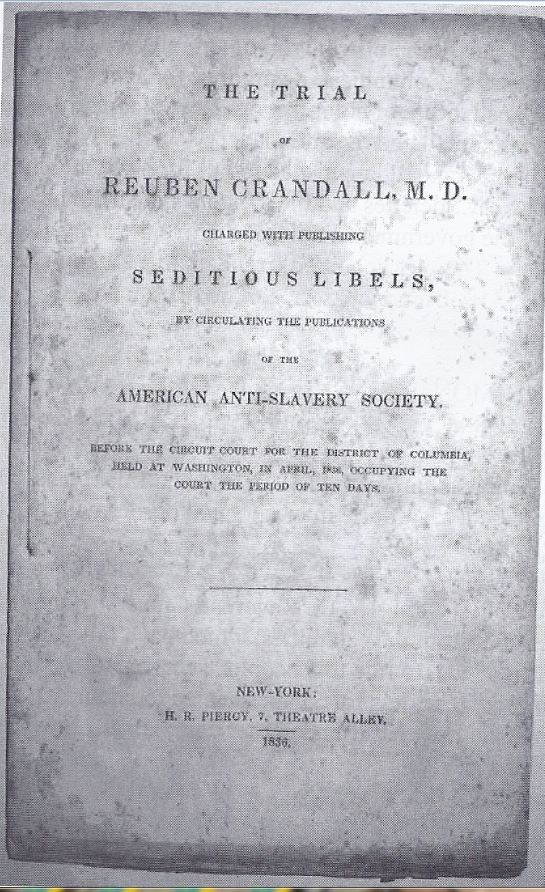Rare Americana from David Lesser Antiquarian Books
- by Michael Stillman

Rare Americana from David Lesser Antiquarian Books
Item 141 is The Anti-Slavery Poems of John Pierpont. Pierpont was a poet, teacher, merchant, and most notably, a Unitarian minister. This background helps explain his strong opposition to slavery. He unsuccessfully ran for public office for the Free Soil party, and served briefly as a chaplain for the Union during the Civil War at the age of 76. While a remarkable man, Pierpont is best known for his descendants. His son wrote Jingle Bells (and, ironically enough, served the Confederacy and wrote pro-Confederacy songs during the Civil War). Even better known is his grandson and namesake, J. (John) Pierpont Morgan, the banker and industrialist of the turn of the century who possessed almost incomprehensible wealth. $275.
The United States has had boundary issues over the years with England, France, Spain, Mexico, and Canada. Can you think of anyone else? Trick question. In 1838, a commission was authorized to determine the boundary between the United States and the Republic of Texas. Their work was completed in 1841, and a report, including six maps, was prepared in 1842 under the title Message of the President...to Run the Boundary Line Between the United States and the Republic of Texas. The report was prepared by Secretary of State Daniel Webster, for President Tyler to deliver to the Senate. Naturally, the U.S. Texas border would be short lived, Texas being admitted to the Union just three years later, but one of the boundary markers still exists in East Texas, the only international boundary marker to be found within the United States. Item 177. $2,000.
Item 103 is a history of one of America's most notorious organizations: Ku Klux Klan. Its Origin, Growth and Disbandment. Published in 1884, it was written by John C. Lester, one of the Klan's founders, with literary assistance from D.L. Wilson. This rare book recounts the first Klan, founded in Pulaski, Tennessee, which existed from 1865-1869. Lester claims it started as a social organization, a lodge of sorts for returning Confederate war veterans with nothing to do. It took a meaningless name (“Ku Klux” is a corruption of the Greek word “kuklos,” or circle). The members adopted their strange costumes and secrecy as it made the organization more interesting. People from other communities became interested, and so dens started shooting up elsewhere. From there, Lester explains, members started to look for a purpose, and the unique situation in the South at the time led to what it became. It was still fairly benign, according to Lester's description. Unethical whites, taking advantage of Reconstruction, and some freed blacks who did not feel they should have to follow the laws of the South, created a situation of lawlessness. The Klan, he says, began to fill the void by scaring those people into better behavior, not so much through violence as superstition – pretending to be ghosts of dead Confederate soldiers and the like. It helped control crime when there weren't sufficient prisons to hold all the criminals. In time, Lester admits, some Klan members became violent, but he insists that much of the terror attributed to Klan members was by outsiders. All in all, Lester's picture is of a basically harmless organization, that occasionally went too far, was blamed for more than it did, and was thereby forced to disband. Whether Lester is at all close to the truth or was trying to put lipstick on a pig, the Klan would come back again later and its full ugliness would be indisputable. $1,250.
David M. Lesser Fine Antiquarian Books may be reached at 203-389-8111 or dmlesser@lesserbooks.com. Their website is www.lesserbooks.com.